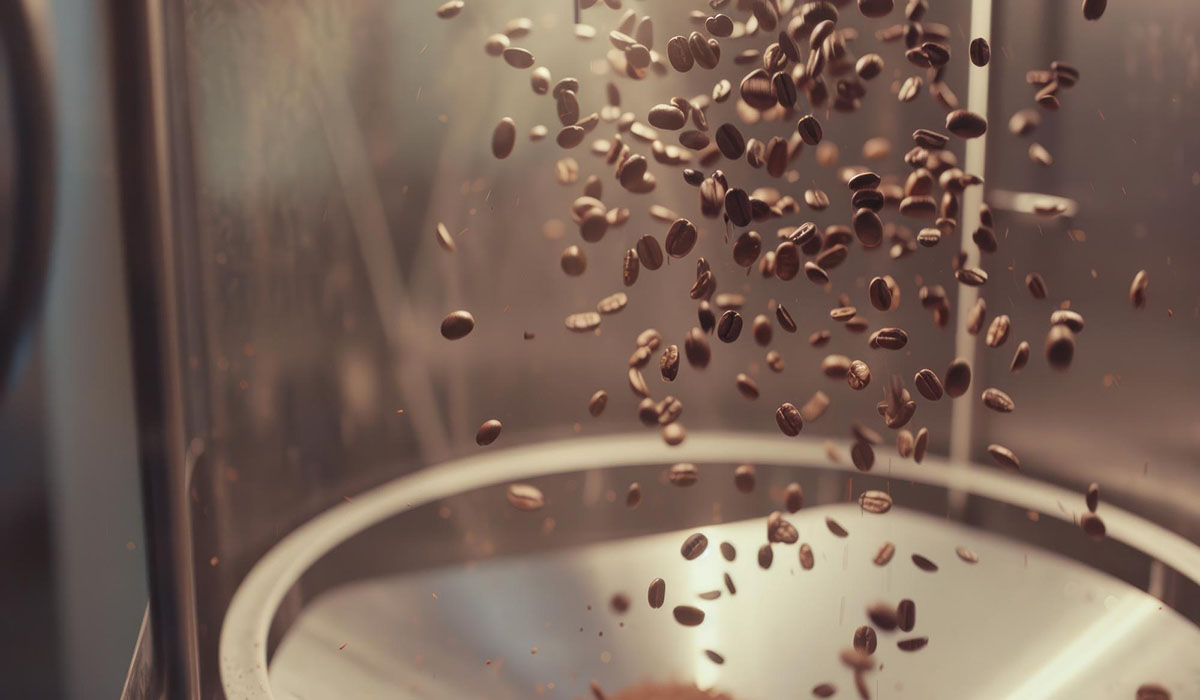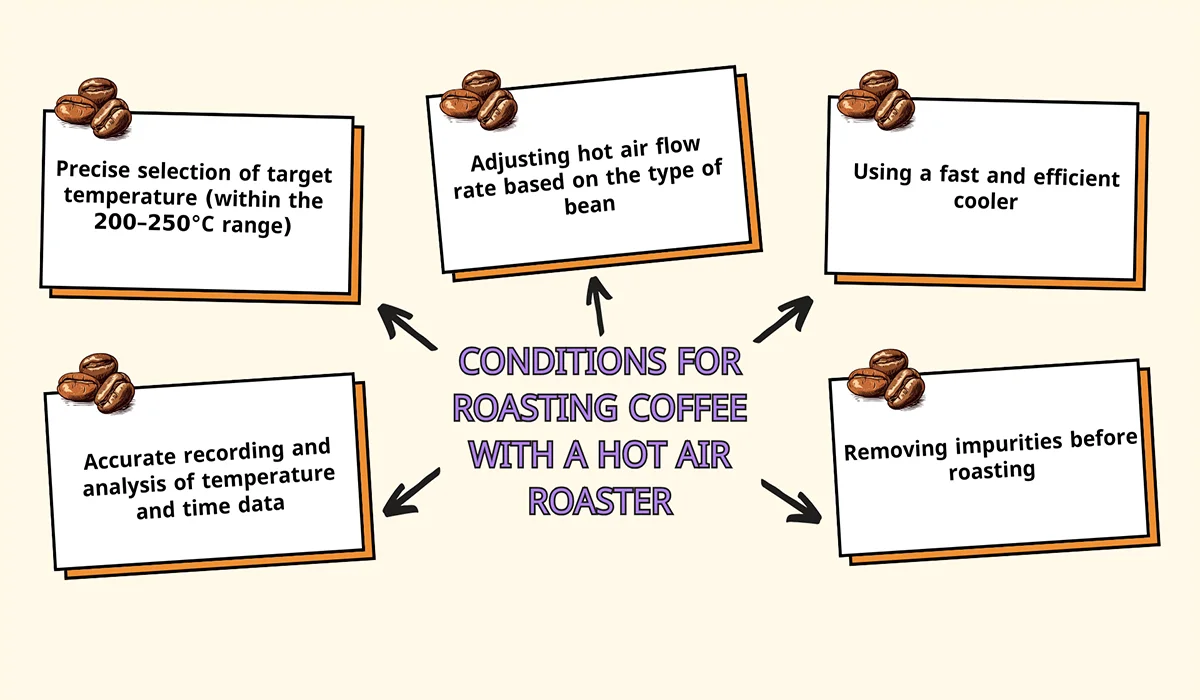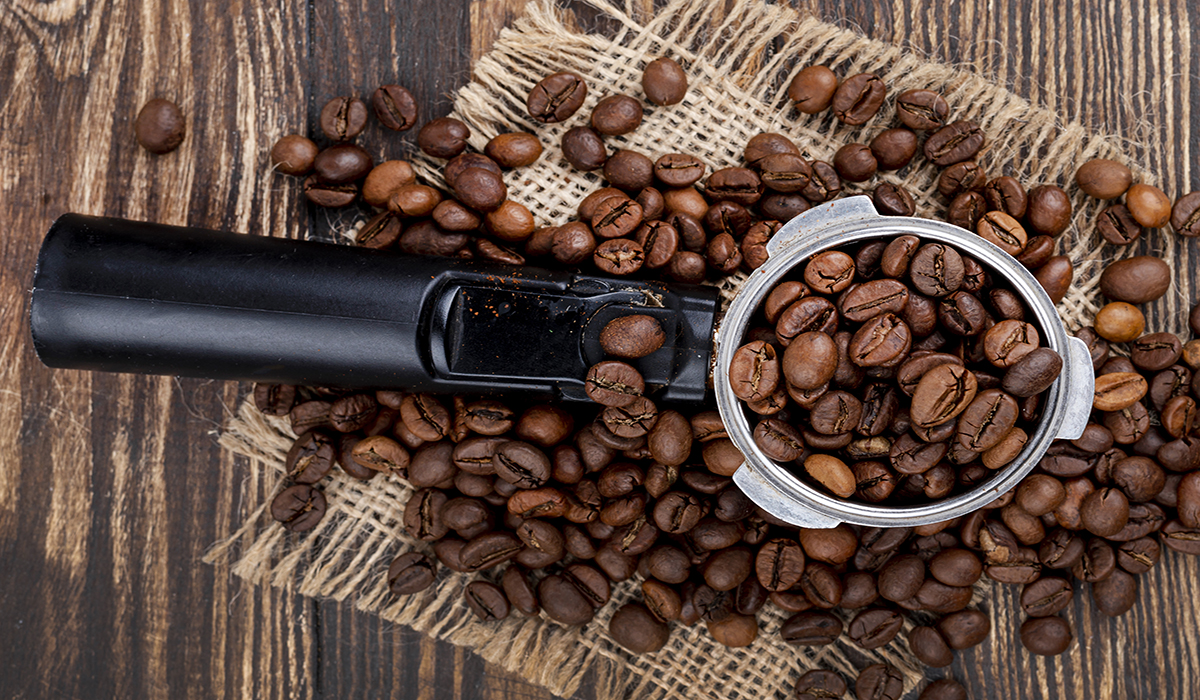Innovative Coffee Roasting Technology: Parto Padideh Air-Roasted Coffees

Coffee roasting is the heart of the coffee production process. The hot coffee roasting air system technology has revolutionized this process by utilizing a stream of heated air. This method, which precisely controls temperatures between 200°C and 250°C, ensures even roasting of the coffee beans for roasting. Parto Padideh Company employs this technology using the most advanced Italian equipment to produce Premium Specialty Coffee in Iran.
Technical Advantages of Hot Air Roasting
The hot Coffee roasting air system evenly heats all surfaces of the beans by using a controlled stream of hot air. Unlike traditional methods such as pan or drum roasting—where beans come into direct contact with hot surfaces and risk burning on one side—this method eliminates uneven heat distribution. Such consistency is key to achieving stable quality in production.
Advanced sensors monitor each moment of the roasting process. The system can precisely adjust temperature and time, storing successful roasting profiles for future use. This ensures each batch adheres to the exact defined standards.
Why Use Hot Air Roasting?
- As a modern technique, hot air roasting enables uniform roasting, eliminates unwanted burns, preserves delicate aromas, and accurately replicates roast profiles.
- It also enhances the hygienic safety of the production line by eliminating direct contact between beans and heated metal surfaces, minimizing contamination.
- Automated data storage systems further support consistent quality in industrial-scale production. This makes it ideal for a coffee beans supplier in Iran looking to offer reliable output.
The Roasting Process in Hot Air Systems
The hot air roasting process consists of several precise stages. First, the coffee beans for roasting pass through a magnet system to eliminate any metallic particles. They are then transferred to the roasting chamber, where the hot air stream begins the roasting process. Temperature and time are carefully monitored to reach the desired roast level.
After roasting, the beans are cooled in a dedicated tray and pass through a destoner. Next, a sorter with 60 electronic eyes detects and removes defective beans. The roasted coffee is then degassed in silos and finally packaged under nitrogen to preserve freshness.
How Does the Hot Air System Work?
- In this system, beans are suspended by a stream of hot air. Instead of direct contact, heat is transferred convectively, which prevents burning and ensures uniform roasting.
- Sensors monitor temperature, time, air flow, and pressure at every stage to ensure the output aligns exactly with the preset profile.
- A fast cooling system activates immediately after roasting to halt the process and avoid over-roasting.
Smart Roasting Parameter Control
The hot air roasting system is equipped with a set of precise sensors that enable complete control over the process. Temperature and roasting time are finely adjustable, and data from successful roasting profiles are stored in the system’s memory to guarantee repeatability.
Each profile includes detailed temperature and timing data for every stage. Users can specify how long the coffee remains at certain temperatures. This level of control is especially important when producing Premium Specialty Coffee in Iran, which requires precise roasting degrees.
Requirements for Hot Air Roasting
To achieve the best results with hot air roasting, the following conditions must be met:
- Accurate selection of target temperature (between 200–250°C)
- Adjusting hot air speed based on bean type
- Use of efficient rapid cooling systems
- Pre-roast removal of impurities
- Precise logging and analysis of time and temperature data
The Role of Technology in Final Product Quality
Hot air roasting systems distribute heat uniformly across all surfaces of the beans using heated air.
This balanced method prevents any part of the bean from burning. The continuous airflow also helps release gases generated during roasting.
Smart temperature and time controls ensure that each roasting profile is repeatable—crucial for industrial production, where consistent quality is vital. The advanced sensors detect any deviations from the profile and make real-time corrections.
Quality Control in the Production Line
The hot air roasting production line includes several quality control stages. First, powerful magnets remove any metal contaminants. Then, the destoner separates heavier foreign objects. Finally, a 60-eye electronic sorter identifies and removes defective beans.
After roasting, the coffee is stored in specialized silos for degassing, a critical step for achieving balanced flavor. The final product is packaged with nitrogen gas injection to extend shelf life. All these steps are performed automatically, without manual intervention.
Hot Air Roasting vs. Traditional Methods
Traditional roasting in pans or drum roasters has several disadvantages. Beans come into direct contact with hot surfaces, leading to uneven heating. This direct contact may cause some parts of the beans to burn while others remain under-roasted, resulting in unbalanced flavor and inconsistent quality.
The hot air roasting system addresses these problems by exposing beans to a continuous stream of heated air, which reaches all surfaces evenly. This airflow not only distributes heat but also removes gases formed during roasting, resulting in a consistently high-quality product.
Advanced Techniques in Hot Air Roasting
Modern hot air roasting systems use advanced techniques to improve product quality. One of these is the precise control of airflow. The speed and volume of heated air are adjusted based on the roasting stage and bean type. This ensures the process is optimal and the coffee’s natural aroma and flavor are preserved.
Another technique involves fast cooling. Once the beans reach the desired roast level, they must be rapidly cooled to stop the process. The cooling system uses cold air to quickly reduce bean temperature—essential for avoiding over-roasting and preserving quality.
Hygiene and Safety in Hot Air Roasting
Safety and hygiene play a major role in Coffee roasting air system. Hot air roasting reduces the risk of contamination by eliminating direct contact between beans and hot surfaces. The continuous hot air stream not only ensures uniform roasting but also aids in sterilizing the beans.
A fully mechanized production line minimizes human contact. From raw material intake to final packaging, every stage is performed automatically. This automation increases speed, precision, and ensures hygienic standards are met. Quality control systems like magnets and electronic sorters are vital in removing any remaining impurities.
Conclusion: Transforming the Coffee Industry with Hot Air Roasting
Hot air roasting technology has transformed the face of the Coffee roasting air system industry. This advanced method, driven by a controlled stream of heated air, offers numerous advantages over traditional techniques: uniform roasting, precise control of time and temperature, data storage of roast profiles, and sophisticated quality control systems. All these make it a new standard in producing Premium Specialty Coffee in Iran.
Hot air roasting systems, with their advanced sensors, ensure accurate control at every stage, resulting in consistent, repeatable quality. Intelligent separation systems such as magnets, destoners, and electronic sorters guarantee the final product’s quality. Fully automated processes meet the highest hygiene standards, setting new benchmarks for every coffee beans supplier in Iran.



